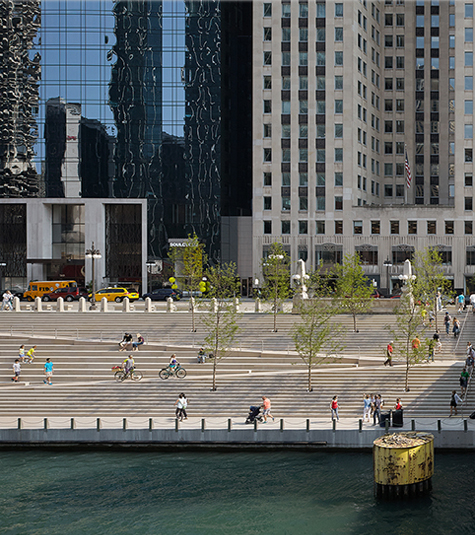Soon We’ll Be Able to Swim in the Chicago River

Take a dip in the Chicago River? Those familiar with its history might think twice.
The Chicago River has a notoriously waste-filled past. Originally, the 150-mile-long waterway was used to fuel booming industry in the Midwest city. Little attention was paid to its environmental and civic value. By the turn of the century, it was contaminated with sewage and factory waste. When a storm cause the Chicago River to overflow, it would spill into Lake Michigan, the source of the city’s drinking water, posing such an acute risk to residents’ health that in 1900 the city turned it around, reverse-engineering its flow and diverting wastewater away from Lake Michigan and out of the region to the Mississippi. The reversal was crucial to protecting thousands of Chicagoans a year from waterborne diseases like typhoid and cholera.
By 1930, after legal complaints from cities downstream, the U.S. Supreme Court ordered Chicago to address the pollution problem. Since then, efforts have been ongoing to clean up the waterway. Recently, the city has stepped up those efforts again with hopes of increase activity along and in the river, including swimming.
In 2015, Mayor Rahm Emanuel and the Metropolitan Planning Council announced the Great Rivers Chicago effort, a city-wide “visioning process” to develop a long-term plan to clean up and reintegrate into city life the three rivers of the Chicago system – the Chicago, Calumet, and Des Plaines Rivers.
The vision, released last year, lays out a series of goals that aim to make the river “inviting, productive and living” with benchmarks at 2020, 2030, and 2040. Ultimately, the city wants to draw more people to a river front that’s safer and more engaging with improve water quality.
And by 2030, they hope to make the river swimmable.
But despite reversing the Chicago River, the city’s combined sewage and stormwater system is still inundated during large storm events and can overflow into the rivers, canals, and Lake Michigan. According to The Chicago Tribune, 18.2 billion gallons of pollution entered the river last year. Chicago plans to eliminate the system’s overflows through green infrastructure and completing the Tunnel and Reservoir Plan, known as the Deep Tunnel project, which started in 1975 and the city hopes to complete by 2029.
For recreation purposes, the rivers need to achieve the “primary contact” water quality standards set for them by the U.S. Environmental Protection Agency in 2011, which would allow for safe swimming, paddling, and fishing.
Each year, 1.5 million Chicagoans and tourists flock to the popular Riverwalk, a 1.25 mile pedestrian walkway that runs from Lake Shore Drive to Lake Street on the south bank of the Chicago River in the city’s downtown. A new $108-million segment designed by the landscape architecture firm Sasaki, Ross Barney Architects, and Collins Engineers that just saw its official opening has generated even more interest in the river.



Paddling is already happening on the river. And a floating museum, or barge-turned moveable entertainment center, which launched this week, will travel along the Chicago River through August, eventually landing at Navy Pier.
New cleanup efforts are happening right alongside all the activity. Last month, the city tested a trash skimmer to collect garbage pooling along the Riverwalk. According to The Chicago Tribune, the floating dumpster is an $11,000 pilot program running through the fall that “sucks in the bacteria-laden water and uses a mesh screen to catch oil pollutants and floating garbage.”
Some residents are ready to take the plunge now, but getting much of the public past the initial “ew factor” of swimming in infamously-polluted waters may take time. Regardless, beyond swimmable urban waterways, this aspiring scheme could offer a unique way of looking at a role of a river can play in connecting a city.







Follow Us!